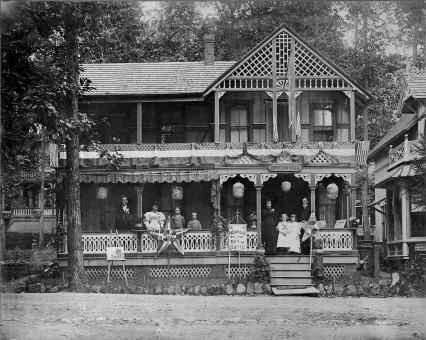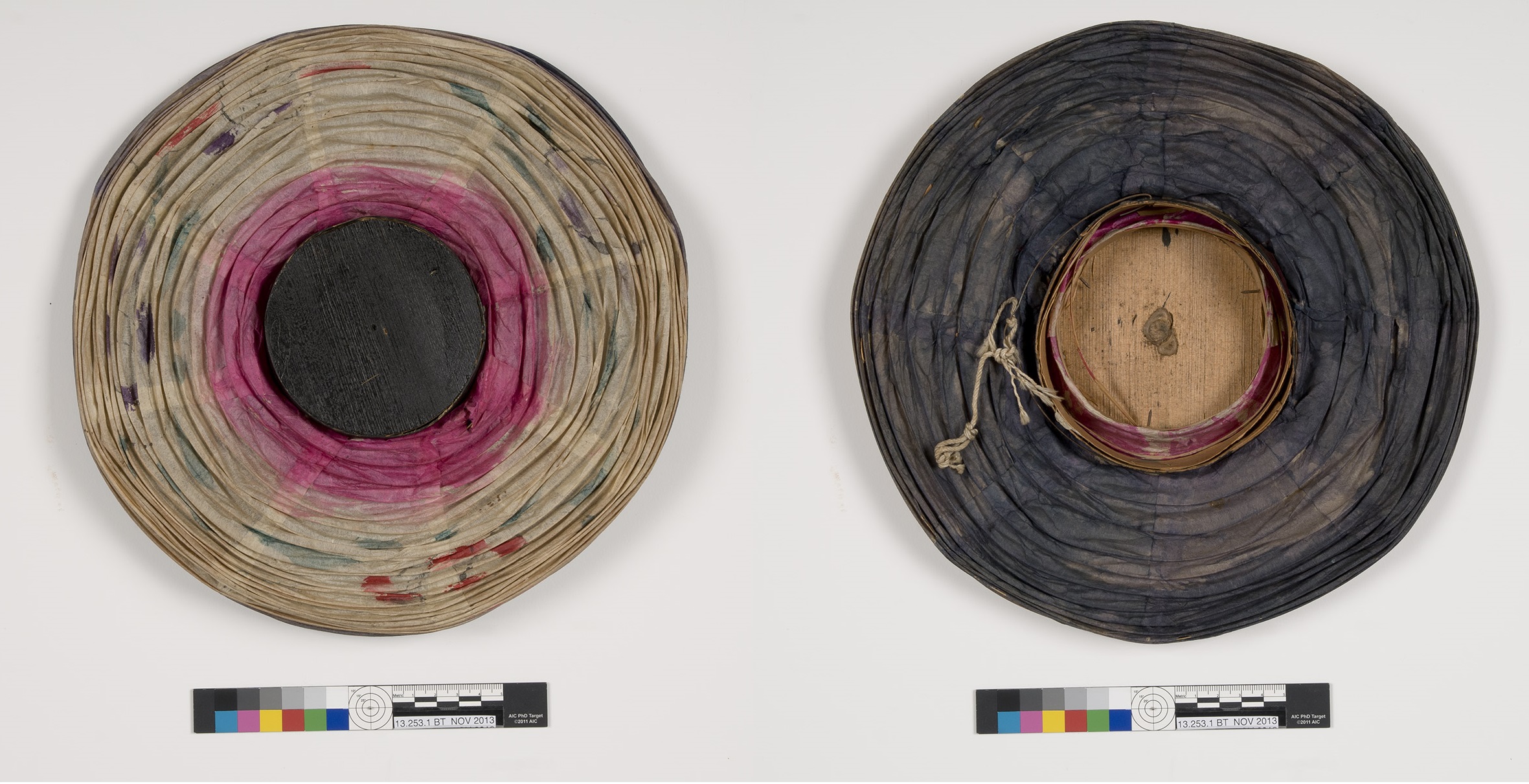Treatment FOCUS: Victorian-era Paper Lanterns
Among the first to purchase property when Mount Tabor, New Jersey, opened as a Methodist summer camp meeting ground in 1869 was Benjamin Foster Britten of Jersey City. Like many Victorian-era city dwellers escaping the summer heat by attending open-air religious revivals, Britten traveled to Mount Tabor seeking services and prayer meetings, as well as a scenic, natural setting. The camp lasted for 10 days in late August, with most attendees staying in tents.

Photograph showing Benjamin Foster Britten and his family on their porch, decorated with paper lanterns, in 1892
Soon, people began to spend entire summers at Mount Tabor. Cultural activities supplemented religious ones, and cottages replaced tents. The house that Britten built at 28 West Morris Avenue was one of the earliest. An 1892 photograph shows Britten and his family on the porch, which—following Mount Tabor tradition—is decorated with paper lanterns for Children’s Day, an annual celebration of the town’s Sunday School students. The family gathered at 28 West Morris every summer until 1947, as the house passed from Britten to his daughter, and then to her daughter.
Inpainting a mend to match the original watercolor washes of the surrounding area
Britten’s great-granddaughter has saved artifacts evocative of the happy summers she spent in Mount Tabor—including 22 lanterns, descendants of those pictured in the photograph. The two that she selected for treatment at CCAHA are constructed of eight sheets of thin paper, hand-painted with watercolor washes. Melted wax, which collected when the lanterns held lighted candles, remains at the base of each. Their owner requested that it not be removed. “When seeing it, one can reflect on a time before safety regulations, when a lighted candle inside a paper lantern, hung in a group of closely spaced wooden houses, was not considered dangerous,” she explained. “It makes one realize how different life was many years ago.”

The lanterns before treatment
Paper Conservator Corine Norman McHugh left the wax as evidence of the lanterns’ utilitarian function. She cleaned their interiors with a variable suction vacuum to reduce dust and grime, and she lightly surface cleaned the exteriors with a sponge. Next, she mended tears and losses with mulberry paper, inpainting these areas with watercolors to match the original washes. CCAHA’s housing department created armatures for the lanterns so that they can safely remain open.
Although Mount Tabor is now a residential community with families of all religious backgrounds, residents still hang lanterns for Children’s Day every year. The Mount Tabor Historical Society, which preserves the town’s Victorian heritage, will display the treated lanterns at the Richardson History House, a camp meeting cottage museum. To learn more, visit www.MountTaborNJ.org.

